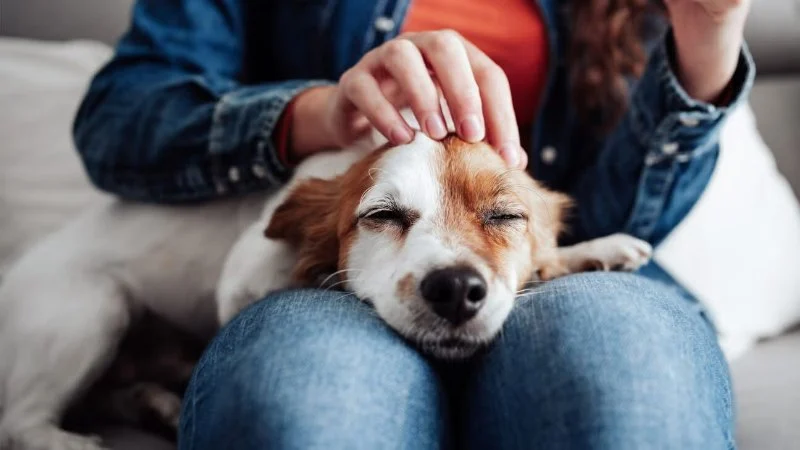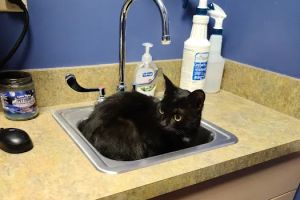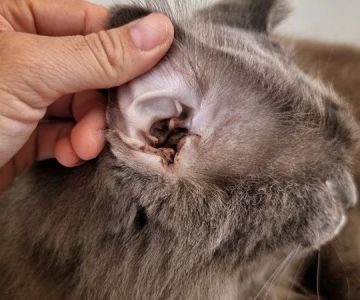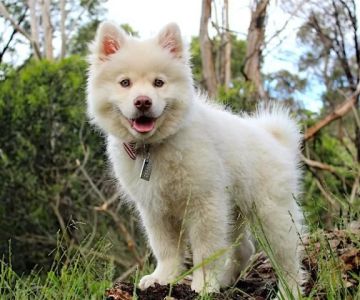
- Understanding-Pet-Anxiety
- Behavioral-Cues-of-Pet-Anxiety
- Physiological-Cues-of-Pet-Anxiety
- Common-Causes-of-Pet-Anxiety
- Helping-Anxious-Pets-Manage-Their-Stress
Understanding Pet Anxiety
Pet anxiety is a common but often overlooked issue that many animals face, especially in stressful environments or situations. Pets, like humans, can experience anxiety for various reasons — whether it’s due to separation from their owners, unfamiliar environments, loud noises, or even certain health conditions. Recognizing the signs of anxiety in your pet is essential in order to provide them with the care and comfort they need.
Pets express their stress and discomfort in different ways, and it’s important for pet owners to be vigilant in identifying both the behavioral and physiological cues that indicate anxiety. This article will explore some of the most common signs of anxiety in pets, and how you can help alleviate their distress.
Behavioral Cues of Pet Anxiety
Behavioral changes are often the first signs that a pet is experiencing anxiety. Pets, particularly dogs and cats, are great at masking their emotions, but over time, certain behaviors will surface that reveal their discomfort. Here are some of the most common behavioral cues to look for:

VCA Fairleigh Animal Hospital
LouisvilleJefferson CountyKentucky
1212 Bardstown Rd, Louisville, KY 40204, USA
1. Excessive Barking or Meowing
If your pet is suddenly barking or meowing much more than usual, it could be a sign of anxiety. Pets may vocalize when they feel threatened or insecure, especially in stressful situations like being left alone or hearing loud noises. For example, many dogs bark during thunderstorms or when their owners leave the house.
2. Destructive Behavior
Chewing, scratching, or other forms of destructive behavior are often a result of stress. An anxious pet may try to "cope" by chewing on furniture, shoes, or their own paws. This behavior is common in dogs that experience separation anxiety when their owners leave the house.
3. Restlessness or Pacing
Pets that are anxious may seem unable to settle down. You may notice them pacing back and forth or circling in one spot. This behavior is often seen in dogs but can also be observed in cats when they are feeling particularly stressed or nervous.
4. Hiding or Avoidance
Some pets will seek out a hiding spot when they are feeling anxious. Cats, for example, may retreat under a bed or inside a closet to escape a stressful situation. Dogs, too, may try to hide or isolate themselves when they feel overwhelmed by anxiety.
5. Changes in Appetite
Pets experiencing anxiety may either lose their appetite or eat excessively. If your pet is suddenly refusing food or showing no interest in their usual meals, it could be a sign that anxiety is affecting them. Conversely, some pets may overeat as a way to soothe their nerves.
Physiological Cues of Pet Anxiety
In addition to behavioral changes, anxiety can also trigger various physiological symptoms in pets. These signs are often linked to the stress response in animals and can include the following:
1. Excessive Panting or Drooling
Excessive panting and drooling are common physiological signs of anxiety, particularly in dogs. When anxious, a dog may pant excessively, even in cooler environments. If your dog is also drooling more than usual, it could indicate that they are stressed or fearful.
2. Shaking or Trembling
Shaking or trembling is another common sign of anxiety, especially during stressful events like thunderstorms or fireworks. Dogs and cats may tremble when they are scared or uncertain about their surroundings. While some pets tremble due to excitement, it’s important to note if it’s accompanied by other signs of distress.
3. Increased Heart Rate
Anxiety can cause a pet’s heart rate to rise. You may notice your pet’s heart racing, especially if they’re highly stressed or frightened. This is often accompanied by heavy breathing or panting, which can be a clear indication that your pet is anxious.
4. Dilated Pupils
For both cats and dogs, dilated pupils can be a physiological sign of anxiety. When pets are anxious or scared, their bodies release adrenaline, which can cause their pupils to enlarge. This reaction is often seen in conjunction with other signs of distress, such as hiding or excessive vocalization.
Common Causes of Pet Anxiety
There are many potential triggers for pet anxiety, and recognizing these causes can help you address the issue more effectively. Here are some of the most common causes of anxiety in pets:
1. Separation Anxiety
One of the most common forms of anxiety in pets, especially dogs, is separation anxiety. This occurs when a pet becomes distressed when their owner leaves the house. Symptoms can include excessive barking, destructive behavior, and attempts to escape.
2. Loud Noises
Thunderstorms, fireworks, and even loud music can trigger anxiety in pets. Dogs, in particular, are known to be sensitive to loud noises, which can lead to panting, drooling, and hiding. Cats can also be affected by loud sounds, often retreating to a hiding spot to cope with the stress.
3. Changes in Environment
Relocating to a new home or even rearranging furniture can cause stress for pets. Animals often thrive on routine and familiarity, so any changes in their environment can lead to feelings of insecurity and anxiety.
4. Medical Conditions
In some cases, underlying health issues can contribute to anxiety in pets. Pain, discomfort, or illness can cause your pet to act out in ways that resemble anxiety. It’s important to rule out medical conditions when addressing behavioral changes.
Helping Anxious Pets Manage Their Stress
Recognizing pet anxiety is the first step in providing the care and support your pet needs. Here are some strategies to help manage anxiety in your pets:
1. Create a Safe Space
For pets that experience anxiety during stressful events, it’s essential to provide a safe, quiet space where they can retreat. This could be a cozy bed or crate where your pet feels secure. Make sure the area is free from distractions and has comforting items like their favorite toys or a blanket.
2. Establish a Routine
Pets thrive on consistency. Establishing a routine for feeding, playtime, and walks can help reduce anxiety by providing structure and predictability. A consistent routine can reassure your pet and give them a sense of security.
3. Training and Behavioral Therapy
Training and behavioral therapy can be highly effective for pets dealing with anxiety. Positive reinforcement techniques can help your pet associate stressful situations with calm behavior. In severe cases, professional behavioral therapy or a consultation with a veterinarian may be necessary.
4. Calming Aids
Calming aids such as pheromone diffusers, anxiety wraps, or calming treats can help alleviate stress. Many pets respond well to these products, which can be particularly useful during stressful events like thunderstorms or when you're away from home.
If you're concerned about your pet's anxiety and need further advice or products to help manage their stress, visit Pet & Puppy for expert recommendations on calming aids and other solutions for anxious pets.








 Arlington Heights Veterinary Hospital - South4.0 (387 reviews)
Arlington Heights Veterinary Hospital - South4.0 (387 reviews) Edgewood Animal Clinic4.0 (70 reviews)
Edgewood Animal Clinic4.0 (70 reviews) Happy Endings In Home Pet Euthanasia5.0 (212 reviews)
Happy Endings In Home Pet Euthanasia5.0 (212 reviews) Greencastle Veterinary Clinic4.0 (246 reviews)
Greencastle Veterinary Clinic4.0 (246 reviews) Vetco Vaccination Clinic4.0 (4 reviews)
Vetco Vaccination Clinic4.0 (4 reviews) UrgentVet4.0 (286 reviews)
UrgentVet4.0 (286 reviews) Canine Cognitive Dysfunction: How to Recognize & Manage Pet Dementia in Dogs
Canine Cognitive Dysfunction: How to Recognize & Manage Pet Dementia in Dogs How AI & Data Are Transforming Preventive Pet Health Care
How AI & Data Are Transforming Preventive Pet Health Care The Hidden Dangers in Common Pet Supplies: What You Need to Know
The Hidden Dangers in Common Pet Supplies: What You Need to Know Remote Monitoring of Chronic Illness in Pets: A New Era in Pet Healthcare
Remote Monitoring of Chronic Illness in Pets: A New Era in Pet Healthcare How to Vet & Interview a Prospective Veterinarian: A Complete Guide for Pet Owners
How to Vet & Interview a Prospective Veterinarian: A Complete Guide for Pet Owners Redirecting Destructive Chewing in Puppies – Effective Solutions for Pet Owners
Redirecting Destructive Chewing in Puppies – Effective Solutions for Pet Owners